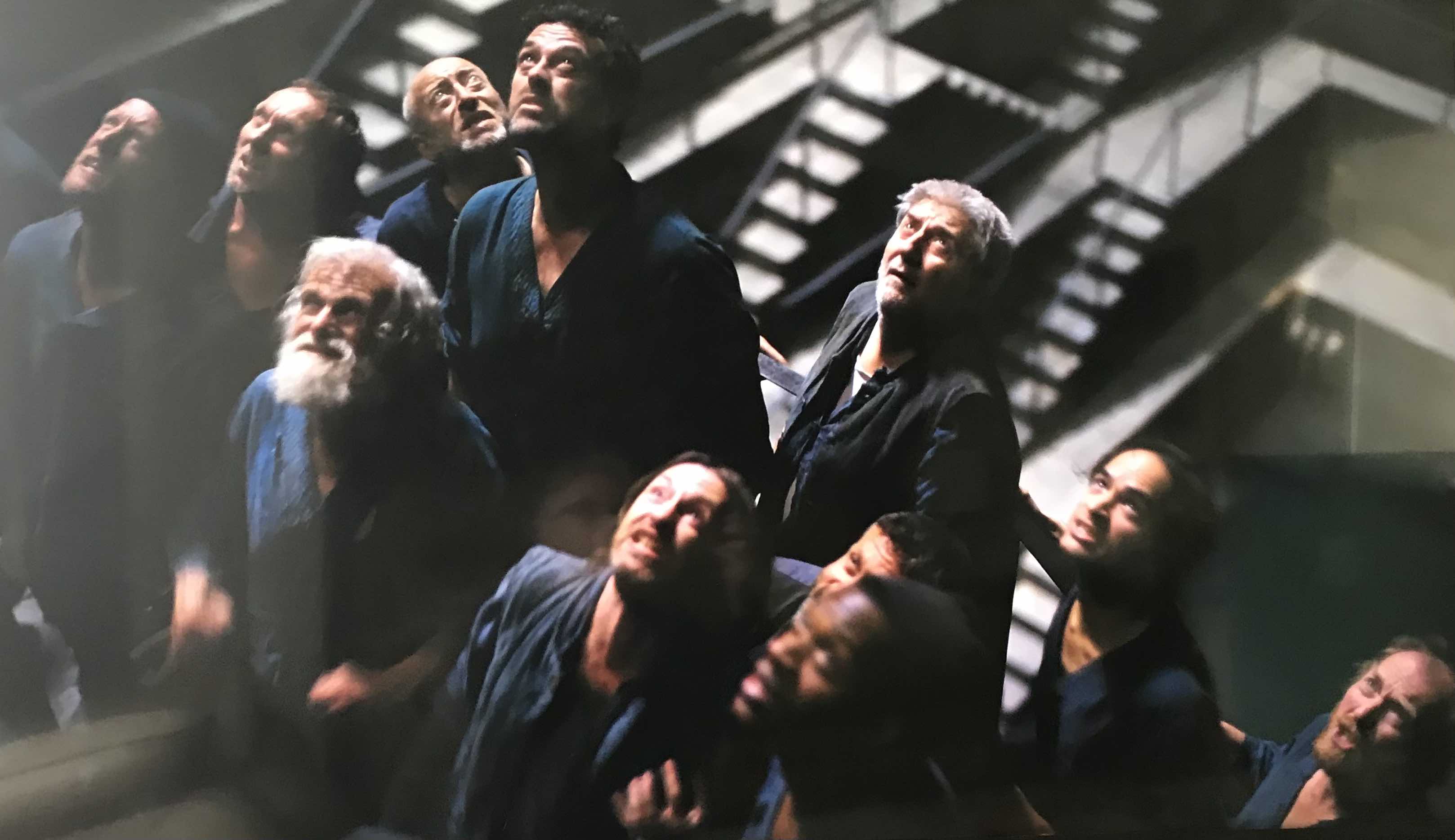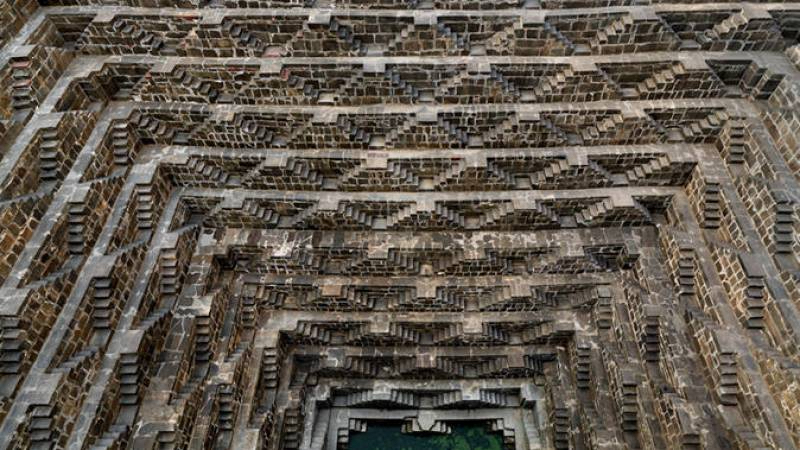
IT WAS one of the most memorable superhero scenes at the movies – battered Batman Bruce Wayne, his back broken by Bane, had to climb out of a perilous prison pit.
The Dark Knight’s rise from the depths was a scene set in a sinister subterranean hell surely dreamed up by a sadist on the CGI team. It looked like nothing on Earth.

But truth is stranger than fiction – and the real thing is even more remarkable than the cinema scenes, as I discovered on a virtual trip at the weekend with local guide Dilip Kumar.
Because Chand Baori, in the small Indian village of Abhaneri, is a sight that initially makes you blink. It is like an Escher drawing supersized and set in stone, a real wonder of the world.

Built at the end of the eighth century, it is a 13-storey stepwell recognised as the oldest and largest of its kind, its 3,500 criss-cross steps leading down to a 30-metre deep pool.
Not that you’d know it from the road that runs through the village in the eastern part of Rajasthan province. You could easily drive past it, meaning that it remains a hidden gem off the tourist trail.

“Chand is the name of the king who built it, and Baori means step well,” explains Dilip. “It was built like that because the king was very happy with the people around so he built them a special step well.
“You can see two slabs sticking out from the wall and these once had a waterwheel on them. Right above the slabs was a room where they would have the ox who pulled the wheel.

“Rooms on the top were built for noblemen, who could break their journey here. Just below are two temples which are submerged so we can only see half of them.
“So many steps were built so that in the summer, people could sit there. The temperature rises up to 46 to 47 degrees but the temperature down by the water can be eight degrees lower.”

When we visit, the water below is around 11 metres deep, but the rainy season in September and October can result in a dramatic change, and it can be as deep as 30 metres.
The water is green and stagnant because the well, like others of its ilk, is no longer used. Instead, Chand Baori has become a monument looked after by India’s governmental National Trust.

The state of Rajasthan is extremely arid, and the design of the well – “It looks like a pyramid placed upside down,” says Dilip – was intended to conserve as much water as possible.
Ancient Indian scriptures made references to construction of wells, canals, tanks and dams, and the site combined many of these to allow for easy access to local water.

Stepwells were not just for drawing water, however, and also served as a setting for religious or ceremonies activities.
Next to the site is the Harshat Mata Temple, which we also visit, and which dates back to around the ninth century. Still in use, it also houses many pieces of sculpture depicting the Hindu gods.

Many are, quite literally, defaced. Centuries ago, Muslim invaders chipped and scrubbed the faces from most of the figures to prevent the local population from worshipping them.
I took my tour with Dilip on the streaming platform Heygo, which offers real-time live tours with local guides for free, although you can leave a tip if you wish. He visits Chand Baori again tomorrow, Thursday April 15, at 11am British Summer Time.

During trips, which can accommodate up to 300 guests – capacity can be increased for special tours where they is exceptional demand – you can chat with the guide and fellow guests, and take ‘postcard’ screenshots for your album.
In recent months, Heygo has offered not just walking tours, but live biking, sailing, skiing and driving experiences – and even a flight over the Icelandic volcano – in more than 250 locations. For the full calendar see www.heygo.com.



7 comments ›